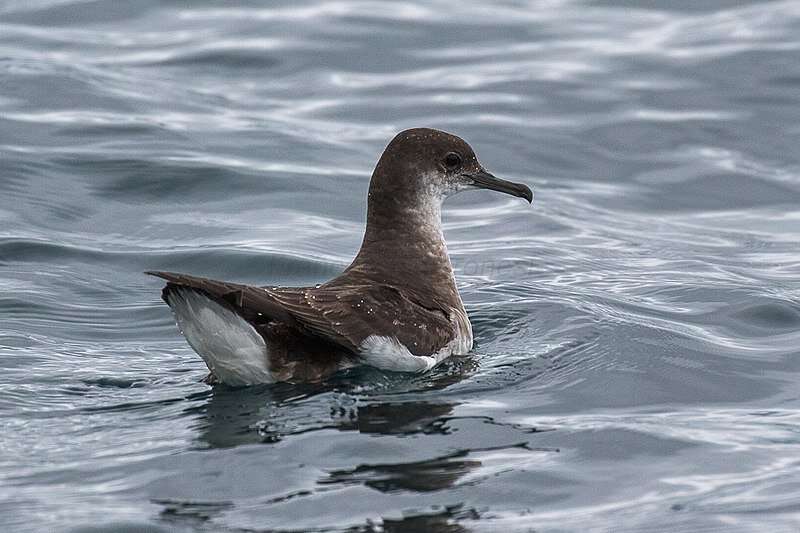How we tracked one small seabird species' remarkable flight into a typhoon

In 2018, 49,000 people in Japan were ordered to evacuate their homes as the strongest typhoon in 25 years, Typhoon Jebi, was on course to make landfall. Among those heading for shelter were my colleague Ken Yoda, professor of behavior and evolution, and his team, who were doing their annual field season studying a type of seabird called streaked shearwaters.
Typhoon Jebi broke wind records at 100 Japanese weather stations, with sustained wind speeds of 120 mp/h. These winds damaged nearly 98,000 houses, caused insurance payouts of $13 billion to £14 billion (£11.4 billion to £12.3 billion) and resulted in the deaths of seven people.
The experience of Typhoon Jebi made Ken realize he had amassed a unique tracking dataset that could be used to study how these seabirds respond to storms out on the open ocean. This information revealed the shearwaters he studied sometimes did the unthinkable: flying straight towards the eye of the storm.
So how does an animal that weighs the same as a pint of milk, weather such conditions?
Using GPS tracking data collected by tagging streaked shearwaters over 11 years on Awashima Island in the Sea of Japan, Ken Yoda teamed up with biologists Manos Lempidakis and I, and meteorologist Andrew Ross, to find out. Manos analyzed the tagging data to see which birds where flying over the Sea of Japan during the passage of a typhoon or tropical storm. Then he analyzed their GPS tracks in relation to the wind.
We never imagined the result would show that shearwaters sometimes fly directly towards the eye of a storm. The few previous studies that tracked seabirds responding to storms showed that adults flew hundreds of miles to circumnavigate them. Yet our results showed the shearwaters chased the storm eye, tracking it for up to eight hours.
How it works
Like albatrosses and other tubenose birds so-called due to the arrangement of their nostrils, shearwaters are adapted for windy conditions, using energy in the wind to fly with little flapping.
Their wing shape allows them to glide for long distances without losing much altitude. Tubenoses tend to live in windy regions, including many that are prone to cyclones.
When shearwaters fly towards the eye of the storm, they are sometimes in or near the eye wall (the region surrounding the storm eye, where the strongest typhoon winds are). But there comes a point where they cannot match the wind speed. When this happens, the birds start to drift with the wind and lose control of their direction of travel.
We used statistical modeling to delve deeper into the shearwater's movements. This work revealed shearwaters sometimes circumvented storms, but only when they were far out to sea and had a clear path around the storm system.
Most shearwaters in the study colony foraged close to the Japanese mainland. It was here, when birds were sandwiched between the storm and the land, that birds flew towards the eye of the storm.
In the northern hemisphere, cyclones move anti-clockwise. So birds foraging close to Japan could have been caught in the strong onshore winds behind the storm eye and forced to fly over land.
Flying over land is dangerous for shearwaters, due to the risk of uncontrolled landings. These birds, which are so agile in the air, are clumsy on land. They struggle to take off, even in normal conditions, which makes them vulnerable to predators, including crows and birds of prey.
Flying towards the eye of the storm, away from land, is the safer option. But birds need to know where land is in order to avoid it. While adults appear to have an internal map, research suggests younger birds have not had the time to build up this knowledge. This might help explain why it is the juvenile shearwaters that sometimes wash up in their thousands in the aftermath of storms.
Stormy weather ahead
We know very little about how seabirds respond to storms, because this kind of extreme weather is, by definition, a rare event. And no two storms are the same. So we need huge amounts of tracking data (and luck) to capture the times when birds are exposed to storms and find patterns in how they behave.
One of the things that makes our study particularly valuable is the amount of data we had. We examined data from 401 shearwaters over 11 years. Within this, 75 birds flew during ten typhoons or tropical storms, making this the largest tracking dataset for animals in storms at the time of publication.
But the strategy of flying towards the eye is probably only an option for fast-flying, wind-adapted birds such as albatrosses and shearwaters. We will need more data to understand whether and how seabirds with different flight styles and energy costs respond to to typhoons that are increasing in intensity, as well as potentially in size and duration.Pelagic seabirds fly into the eye of the storm when faced with extreme weather conditions
Provided by The Conversation
This article is republished from The Conversation under a Creative Commons license. Read the original article.![]()
No comments:
Post a Comment